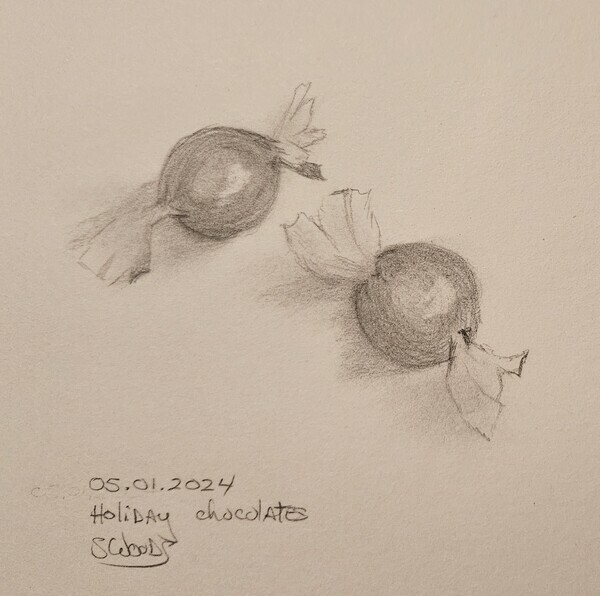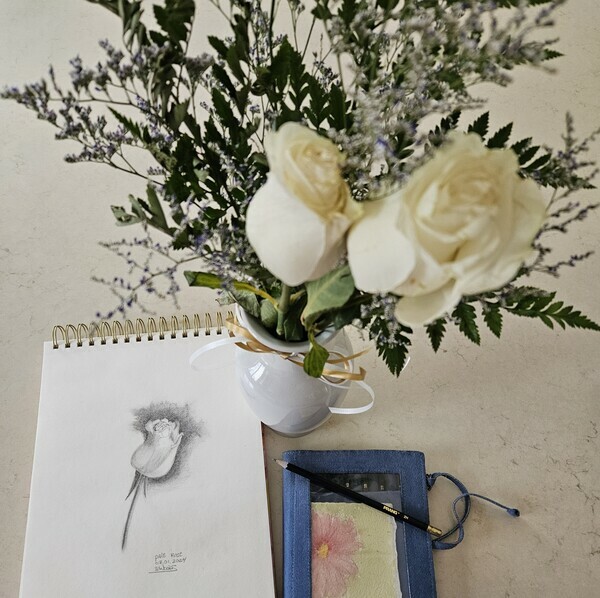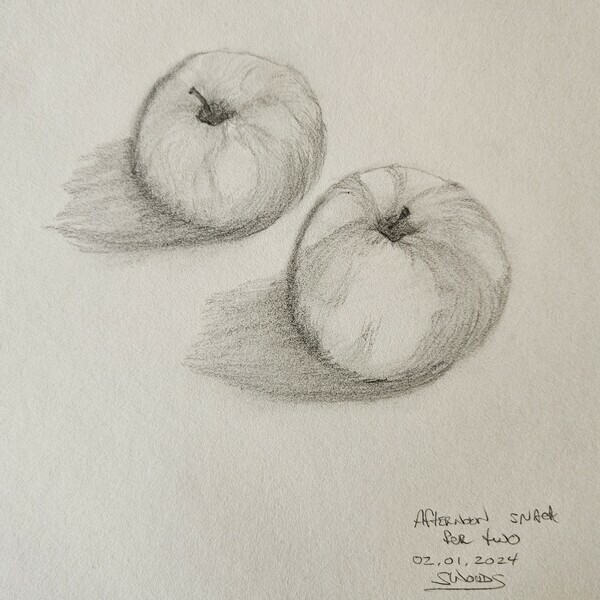In the news
Many people who aren't painters imagine that the most important part of a painting is its colour scheme.
Which colours to use, though, is often the easiest decision to make when planning a new painting.
What's truly crucial, even for abstract or non-representational work, are the choices of composition & values - the areas of dark, mid-toned, and light areas in a painting.
The values are what create a pattern or rhythm in an artwork, what leads thevete around a composition.
So I like to think of my initial composition, often sketched direction onto my watercolour paper, as the foundation of a representational painting.
The values are the wall studs, ceiling beams, roof trusses, and other supporting structures that will make the scene real - to make a two-dimensional work seem believable, as a representation of a three-dimensional space.
The pigment colours I choose at that point are almost irrelevant, as long as the values - the areas of dark, pale, and in-between - are fairly accurate.
That's why it's so important for me to practice basic sketching, even if my goal is to paint loose or impressionistic watercolours... to train my brain to 'see' the light and dark areas of a subject or scene.
These quick-draw sketches also help me to more quickly capturing scenes when I'm painting en plein-air (outside).
An easy, or at least convenient, way to improve one's basic sketching skills is to get into the habit of sketching something every day.
During the warmer months, I never have to think about doing daily sketches, as I'm out plein-air sketching every day for fun and as on-site preparation for my plein-air paintings - usually off the back of my bicycle.
Once the weather gets too cold for me to sketch outdoors, though, I start forgetting to sketch something each day.
Then there's the busyness leading up to (Canadian) Thanksgiving, Halloween, and the winter holidays, so by the time New Year's Day rolls around I'll often realize that I haven't done a daily sketch in weeks.
So I now have something of a repeating New Year's challenge, from the first day of each year; to get back into the habit of daily sketching.
These are some of my first daily sketches from this year, that force me to use my CRPS-affected right hand and arm - and to apply the brain-plasticity aspects of seeing and sketching, as part of my pain-management plan for neuropathic chronic pain.
It's also rather relaxing to focus on something - other than a phone, tablet, or computer screen - for a little while each day.
Have YOU sketched something today?


